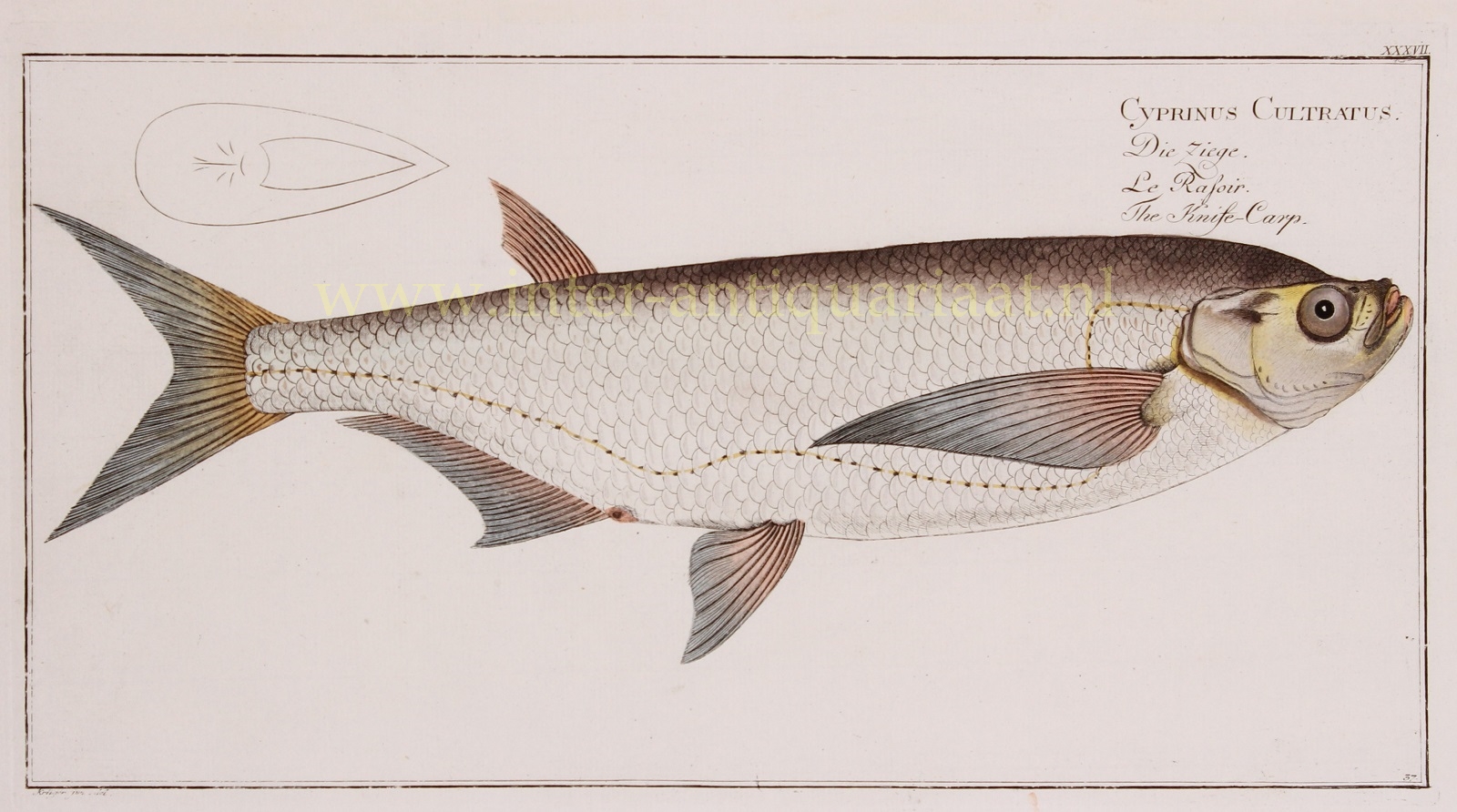THE SABRE CARP
“Cyprinus Cultratus/Die Ziege/La Rafoir/The Knife-Carp” (plate 37), copper engraving made by Ludwig Schmidt after the drawing of Krüger jr, for Markus Elieser Bloch’s “Allgemeine Naturgeschichte der Fische” published in Berlin between 1782 and 1795. With original hand colouring. Size: 19 x 38 cm.
Bloch’s work on the “Allgemeine Naturgeschichte der Fische” occupied a considerable portion of his life, and is considered to have laid the foundations of the science of ichthyology. The publication was encouraged by a large subscription, and it passed rapidly through five editions in German and in French. Bloch made little or no alteration in the systematic arrangement of Peter Artedi and Carl Linnaeus, although he was disposed to introduce into the classification some modifications depending on the structure of the gills. To the number of genera before established, he found it necessary to add nineteen new ones, and he described 276 species new to science, many of them inhabitants of the remotest parts of the ocean, and by the brilliancy of their colours, or the singularity of their forms, as much objects of popular admiration as of scientific curiosity.
Bloch is considered the most important ichthyologist of the 18th century.
The sabre carp, also known as the sabrefish, is a species of freshwater fish that is found in parts of Europe and Asia. It is a member of the family Cyprinidae, which also includes carps, minnows, and crucian carp. The sabre carp is a hardy species that can tolerate a wide range of water conditions, including low oxygen levels and poor water quality. It is an omnivorous species that feeds on a variety of organisms such as algae, insects, and small crustaceans. The sabre carp typically grows to around 20-30 centimeters in length and can weigh up to 1 kilogram. The sabre carp today is not considered a commercially important species, but it is a popular game fish for anglers and is also used for ornamental purposes in ponds and aquaria.
Price: Euro 350,-


